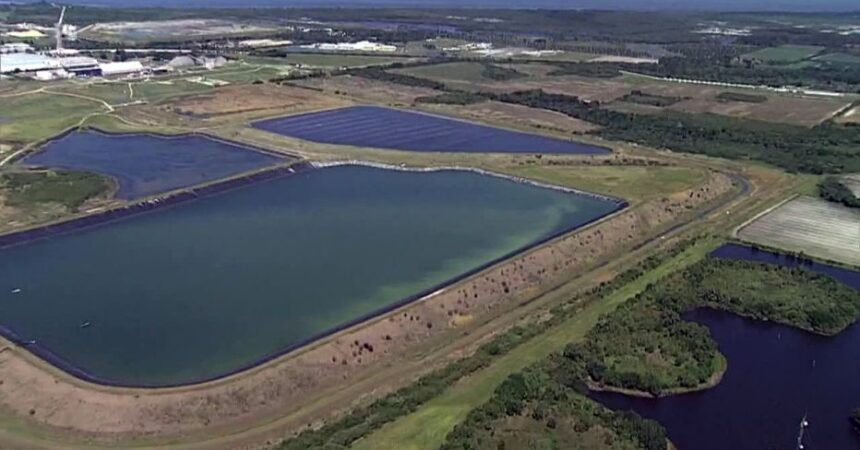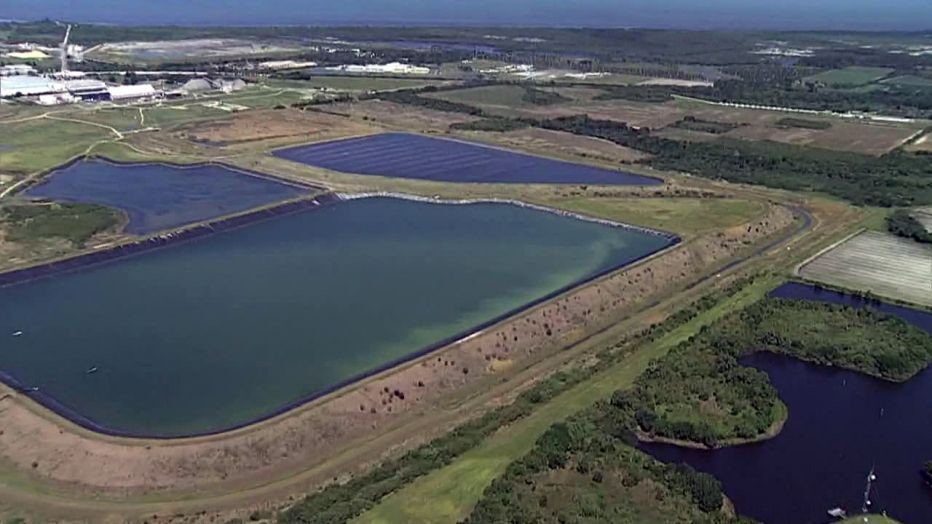
State plans cleanup of old phosphate plant

Photo special to the Outlook
Jim Turner
News Service of Florida
The state expects to put more than $115 million toward closing the site of a former phosphate plant where a reservoir leak set off a wastewater crisis in Manatee County.
Gov. Ron DeSantis also said last Tuesday investigators are working to determine if legal action can be taken against HRK Holdings, the owner of the old Piney Point site.
DeSantis on April 3 declared an emergency in Manatee, Hillsborough and Pinellas counties as a leak in a reservoir forced an evacuation of nearby residents amid worries that a wall could collapse, leading to a flood of contaminated water.
While crews averted a potential catastrophe, DeSantis returned to the site to announce he was redirecting $15.4 million in Department of Environmental Protection dollars to pre-treat water at the Piney Point site in case additional controlled discharges are needed to reduce pressure in the reservoir. Meanwhile, a study will be conducted about the overall needs to “mothball” the site.
“Rigorous water quality monitoring will continue so the state can assess any potential ecological impact from this event,” DeSantis said. “This data will be used by DEP as they move forward with enforcement to hold HRK accountable. And I’m further directing DEP to fully investigate the incidents here at Piney Point and to take any and all legal actions to ensure we hold HRK and any other actors fully accountable.”
Senate President Wilton Simpson, R-Trilby, said the Legislature is expected to provide $100 million, with the hope that the Department of Environmental Protection will be able to complete a closure plan for the site by the end of the year.
“The objective would be to come back next year and have a fully funded plan,” Simpson said.
Simpson previously estimated the cleanup could reach $200 million and suggested using money from the state’s share of the American Rescue Plan, a new federal stimulus package. He has also suggested the state should devise a plan to address other long-neglected ecological hazards, estimating there could be at least 25 across the state.
The Senate two weeks ago put $3 million into its proposed budget (SB 2500) to start cleaning up the Piney Point site.
Similar funding has not been included in the House plan, but House budget leaders said they expected dollar amounts to be worked out during upcoming negotiations over a spending plan for the 2021-2022 fiscal year.
“We have all seen the devastation play out in the media and through conversations with some of our members here,” said Rep. Josie Tomkow, a Polk City Republican who chairs the House Agriculture & Natural Resources Appropriations Subcommittee. “During the conferencing (negotiating) process, that is something that is definitely at the forefront of both chambers and the governor’s mind and so we will work that out then.”
A little more than 200 million gallons of wastewater was initially discharged toward Tampa Bay from the site, with the wastewater reported to be a mix of seawater from a dredging project and water containing the remnants of the fertilizer business.
While the evacuation of residents has ended, concerns remain that the discharged wastewater could result in algal blooms and fish kills in area waters.
The environmental law firm Earthjustice said last Tuesday’s announcements were only an initial step in dealing with broader problems.
“The state has to make adequate investment to clean the water, close the site and make commitments to regulation and enforcement that ensures we are never on the edge of a disaster like this again,” Earthjustice attorney Bonnie Malloy said in a prepared statement. “This is a first step, and we need to see the follow-through before we celebrate. The DEP needs to investigate the other Florida phosphate waste sites and be proactive in managing this threat. At this point, there’s no excuse for any of these phosphate facilities to escape scrutiny.”
Department of Environmental Protection Secretary Noah Valenstein said a team of state scientists, along with their county counterparts, groups like Tampa Bay Estuary Program and students from the University of South Florida, have been in the water daily at Piney Point collecting baseline samples that could help build a case against HRK.
“We also have a team of attorneys back at Tallahassee that are making sure they take advantage of all the information we’re collecting to then put together a case to hold HRK fully accountable,” Valenstein said.
Officials from HRK did not immediately respond to a request for comment on Tuesday.







